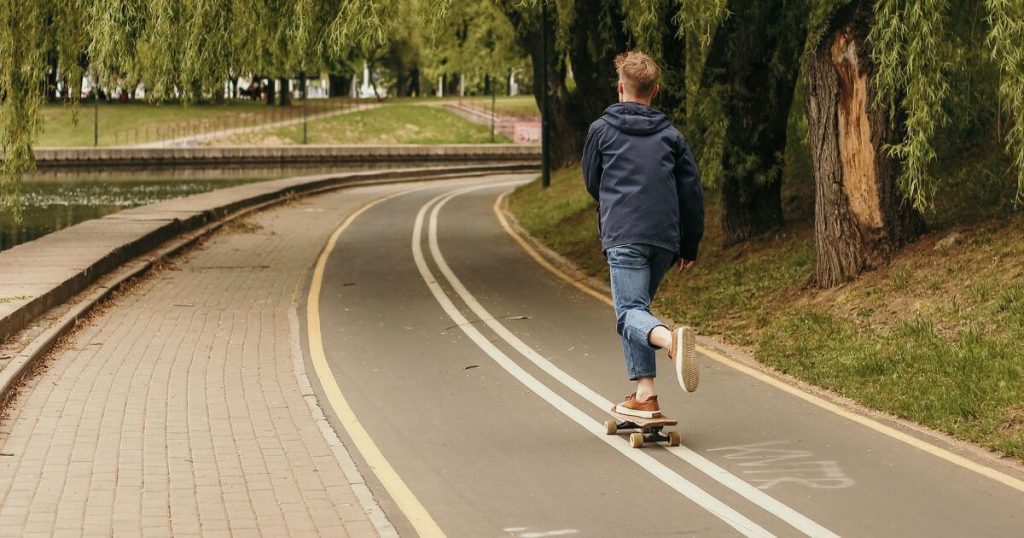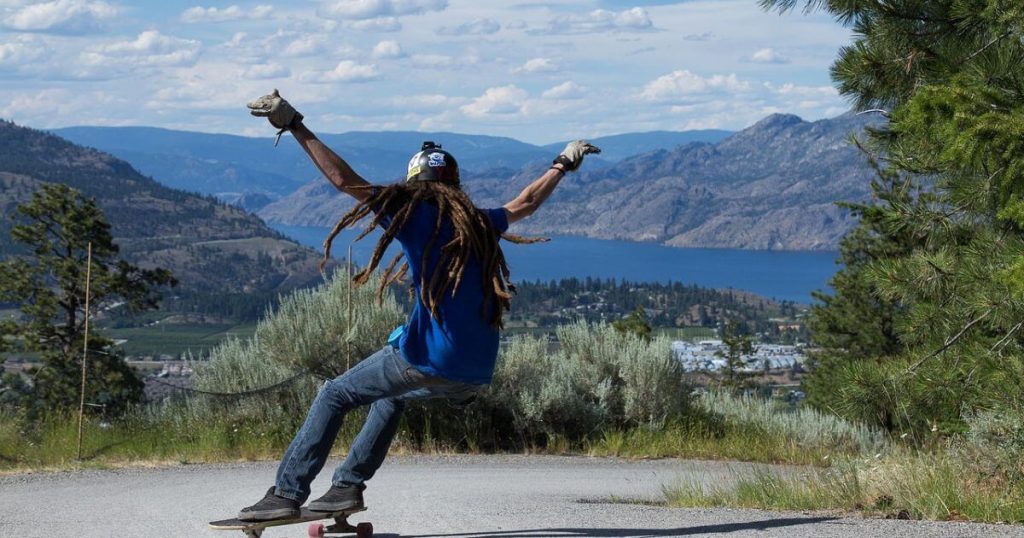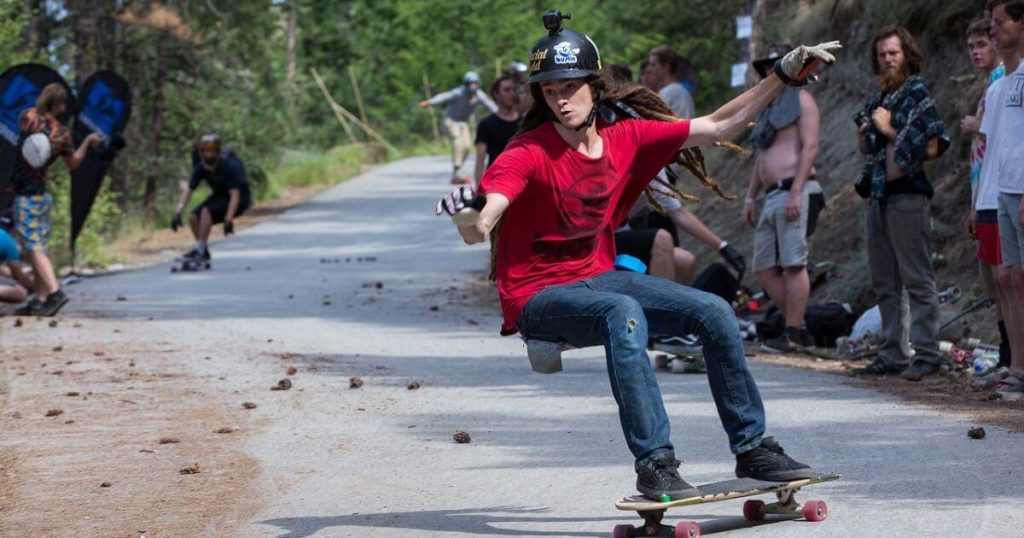Longboarding has gained significant popularity in recent years, thanks to its versatility, the wide range of styles available, and the adrenaline rush it offers to riders. As a growing number of individuals take to the streets on their longboards, it becomes increasingly important for riders to understand and practice longboarding etiquette. Sharing the road with others is crucial for everyone’s safety and enjoyment.
In this comprehensive guide, we will cover road safety requirements, common local laws and ordinances that impact longboarding, and tips for preparing for safe downhill longboarding. So, whether you are new to the sport or a seasoned longboarder, this guide will help you enhance your longboarding experience while ensuring the safety of yourself and those around you.
Understanding Different Types of Longboards
Before we dive into longboarding etiquette, it’s essential to understand the various types of longboards available, as each is designed for specific riding styles and conditions. Familiarizing yourself with the different longboard styles will help you choose the right board for your preferred riding experience and ensure that you follow proper etiquette when sharing the road with others. Here’s a closer look at some of the most popular longboard styles:
- Freeride Longboards: Freeride longboards are designed for riders who enjoy carving, sliding, and performing technical maneuvers at various speeds. These boards typically have a symmetrical shape, a medium to long wheelbase, and versatile trucks and wheels to accommodate a wide range of riding styles.
- Downhill Longboards: Downhill longboards are built for speed and stability when riding downhill at high velocities. These boards often feature a stiff deck, a low center of gravity, and a longer wheelbase for enhanced stability and control during high-speed descents.
- Cruiser Longboards: Cruiser longboards are designed for casual, relaxed riding and commuting. They usually have a directional shape, a shorter wheelbase, and softer wheels for a smooth, comfortable ride on various surfaces. Cruisers are ideal for beginners and those looking to ride at moderate speeds on flat or slightly inclined surfaces.
- Electric Longboards: Electric longboards are motorized longboards that offer riders the convenience of powered propulsion. They come in various styles, from commuter-friendly boards like the Liftboard to performance-focused models like the MEEPO V5. Electric longboards enable riders to tackle longer distances and steeper inclines without the need for pushing or foot braking, making them an attractive option for those seeking an alternative mode of transportation or a more accessible way to enjoy the sport.
By understanding the different types of longboards and their intended purposes, you can make an informed decision when choosing a board that best suits your riding style and preferences. This knowledge will also help you adapt your longboarding etiquette to the specific type of board you are riding, ensuring a safe and enjoyable experience for yourself and those around you.
Road Safety Requirements Surrounding Longboarding Etiquette

Road safety is a crucial aspect of longboarding etiquette. As a longboarder, it’s essential to be aware of local laws and ordinances that govern the use of longboards on public roads, sidewalks, and bike paths. This knowledge will help you navigate shared spaces safely and responsibly, while also avoiding potential fines and legal issues.
Here are some general guidelines to follow when it comes to road safety requirements and local laws for longboarding:
- Know your local laws: The first step to responsible longboarding is understanding the laws and regulations in your area. This may include restrictions on where you can ride, as well as specific safety equipment requirements like helmets, lights, and reflective gear. Make sure to research your local longboarding ordinances before hitting the streets, and always comply with any posted signs or rules.
- Wear appropriate safety gear: Wearing proper safety gear is not only essential for your own protection but also demonstrates respect for the safety of others on the road. A good helmet is crucial, as it can significantly reduce the risk of head injuries in case of a fall. Additionally, consider wearing knee and elbow pads, wrist guards, and slide gloves for added protection.
- Stay visible: Ensuring that you are visible to motorists, cyclists, and pedestrians is an essential part of road safety. Wear bright, reflective clothing and equip your longboard with lights to make yourself more noticeable, especially during low-light conditions like dusk or nighttime.
- Ride defensively: Defensive riding means being proactive about anticipating potential hazards and reacting accordingly to minimize the risk of accidents. Keep a safe distance from vehicles, cyclists, and pedestrians, and always yield the right-of-way when required. Be prepared to stop or change direction if necessary, and maintain a speed that allows you to stay in control of your longboard at all times.
- Follow traffic rules: Obey traffic signals and signs, ride in the same direction as traffic, and use hand signals to communicate your intentions to turn or stop. Be especially cautious at intersections, as this is where most accidents involving longboarders and other road users occur.
- Stay alert and focused: Pay attention to your surroundings, and avoid using headphones or other distractions while riding. This will help you stay aware of potential hazards and respond more effectively to changing road conditions.
By adhering to road safety requirements and local laws, you demonstrate respect for the safety of all road users, which is an integral part of longboarding etiquette. As a responsible longboarder, your actions will not only help protect yourself but also contribute to creating a safer environment for everyone sharing the road.
Practicing Courtesy and Respect Towards Other Road Users

One of the most important aspects of longboarding etiquette is showing courtesy and respect towards other road users, including pedestrians, cyclists, and motorists. As a longboarder, it’s essential to be mindful of those around you and to take appropriate actions to ensure everyone’s safety and enjoyment of shared spaces. Here are some guidelines to help you practice good longboarding etiquette when interacting with other road users:
- Yield to pedestrians: Always give pedestrians the right-of-way, especially on sidewalks and pedestrian pathways. Slow down and be prepared to stop if necessary, as pedestrians may not always be aware of your presence. When passing pedestrians, do so with caution, providing ample space and warning them of your approach if needed.
- Communicate with other road users: Use clear hand signals, verbal cues, or even a friendly wave to communicate your intentions to other road users. This can help prevent misunderstandings and accidents by ensuring that everyone is on the same page. For example, if you plan to pass a cyclist, you can call out “On your left!” to let them know you’re approaching.
- Respect cyclists and their space: When sharing bike lanes or paths with cyclists, maintain a safe distance and avoid cutting them off or tailgating. Remember that cyclists have the same rights and responsibilities as other road users, and it’s crucial to treat them with respect.
- Be mindful of motorists: While longboarding, always be aware of your position relative to motor vehicles and avoid obstructing their path. Ride as far to the right side of the road as possible, and never weave in and out of traffic or ride against the flow. When approaching intersections or making turns, ensure you are visible to drivers and follow the appropriate traffic rules.
- Stay in control: Maintaining control of your longboard is essential for your safety and the safety of others. Practice proper braking techniques and avoid riding at speeds that may make it difficult for you to stop or maneuver around obstacles.
- Be aware of your surroundings: Pay attention to the environment around you and adapt your riding style accordingly. For example, if you’re riding in a busy urban area, you’ll need to be more cautious and aware of potential hazards, such as pedestrians stepping into your path or car doors opening unexpectedly.
- Respect private property: Avoid riding on private property without permission, and be considerate of residents when longboarding in residential areas. Keep noise levels down, and don’t trespass on driveways or yards.
By practicing courtesy and respect towards other road users, you’ll not only contribute to a safer and more enjoyable environment for everyone but also help to promote a positive image of the longboarding community. Remember that your actions as a longboarder can impact the way others perceive the sport, so always strive to be a responsible and respectful ambassador of longboarding.
Proper Preparation for Safe Downhill Longboarding
Downhill longboarding is an exhilarating and thrilling aspect of the sport, but it also comes with its own set of challenges and risks. As a downhill rider, it’s crucial to take the necessary precautions to ensure your safety and the safety of those around you. Here are some essential tips for preparing for a safe downhill longboarding experience:
- Choose the right longboard setup: A suitable downhill longboard should be designed for stability and control at high speeds. Opt for a downhill-specific longboard with a low center of gravity, a longer wheelbase, and a stiff deck. Additionally, consider investing in high-quality longboarding trucks and wheels that offer improved stability and grip.
- Wear appropriate protective gear: Downhill longboarding comes with a higher risk of falls and injuries, making it vital to wear proper safety gear. A high-quality helmet is a must, along with knee and elbow pads, wrist guards, and slide gloves for hand protection. Some downhill riders also opt for additional protective gear, such as spine protectors and padded shorts.
- Inspect your equipment: Before heading out for a downhill session, thoroughly inspect your longboard to ensure that all components are in good working order. Check for any loose bolts or damaged parts, and make sure that your bearings are clean and well-lubricated. Regular maintenance will help keep your longboard performing at its best and minimize the risk of equipment failure while riding downhill.
- Master the basics: Before attempting downhill longboarding, make sure you’re comfortable with the basic skills, such as pushing, foot braking, and carving. It’s also essential to learn and practice advanced techniques, such as sliding and speed checks, to control your speed and maintain stability during downhill rides.
- Scout the route: Before riding a downhill spot, take the time to scout the route and familiarize yourself with its features, such as turns, road conditions, and potential hazards. Keep an eye out for debris, potholes, or other obstacles that could cause you to lose control of your longboard.
- Ride within your limits: It’s important to know your limits and ride within your skill level. Pushing yourself too far too soon can result in accidents and injuries. Gradually build your skills and confidence by starting with less challenging downhill routes before progressing to more difficult ones.
- Respect other road users: Downhill longboarding often involves sharing the road with cars, cyclists, and pedestrians. Make sure to practice good longboarding etiquette by being courteous and respectful towards other road users, following traffic rules, and maintaining a safe distance from vehicles and people.
By preparing thoroughly for downhill longboarding and taking the necessary safety precautions, you can minimize the risk of accidents and injuries while enjoying the adrenaline rush that this exciting aspect of the sport offers. Remember that safety should always come first, and as a responsible rider, it’s up to you to prioritize the well-being of both yourself and others around you.
Longboarding Etiquette: Sharing the Road

Now that we’ve covered road safety requirements, local laws and ordinances, and proper preparation for downhill longboarding let’s delve into longboarding etiquette. Here are some actionable tips to help you share the road with other users and foster a positive longboarding community:
- Respect other road users: Treat pedestrians, cyclists, and motorists with courtesy and respect, even when they may not extend the same to you.
- Yield to pedestrians: Always give way to pedestrians, especially in crowded areas or on shared pathways.
- Stay aware of your surroundings: Keep your eyes and ears open, and avoid using headphones or earbuds while longboarding to stay aware of traffic and potential hazards.
- Control your speed: Avoid excessive speed in crowded areas or when approaching intersections, and always be prepared to stop if necessary.
- Use caution when overtaking: When overtaking other longboarders or cyclists, do so with caution and signal your intentions.
- Avoid obstructing pathways: When stopping or resting, move your longboard off the pathway to avoid blocking the way for others.
- Respect private property: Don’t trespass or ride on private property without permission.
- Leave no trace: Don’t litter or vandalize public spaces, and always clean up after yourself.
- Be a positive ambassador: Represent the longboarding community in a positive light by being respectful, friendly, and helpful to others.
Wrapping Up
Longboarding etiquette is crucial for ensuring a safe and enjoyable experience for everyone on the road. By following road safety requirements, being mindful of local laws and ordinances, and practicing proper longboarding etiquette, you can contribute to a positive longboarding community while enjoying the sport responsibly.
As you continue to hone your longboarding skills, don’t forget to explore the vast array of longboarding gear and resources available to help you enhance your riding experience. From finding the best longboard brands to discovering the top longboarding destinations, there’s always something new to learn and explore in the world of longboarding.
Remember, the key to mastering longboarding etiquette is staying informed, practicing safety, and treating others with respect. By doing so, you’ll not only improve your own longboarding experience but also help make the roads safer and more enjoyable for everyone.
So, gear up, ride safely, and embrace the thrill of longboarding while sharing the road responsibly with others.
Happy riding!







